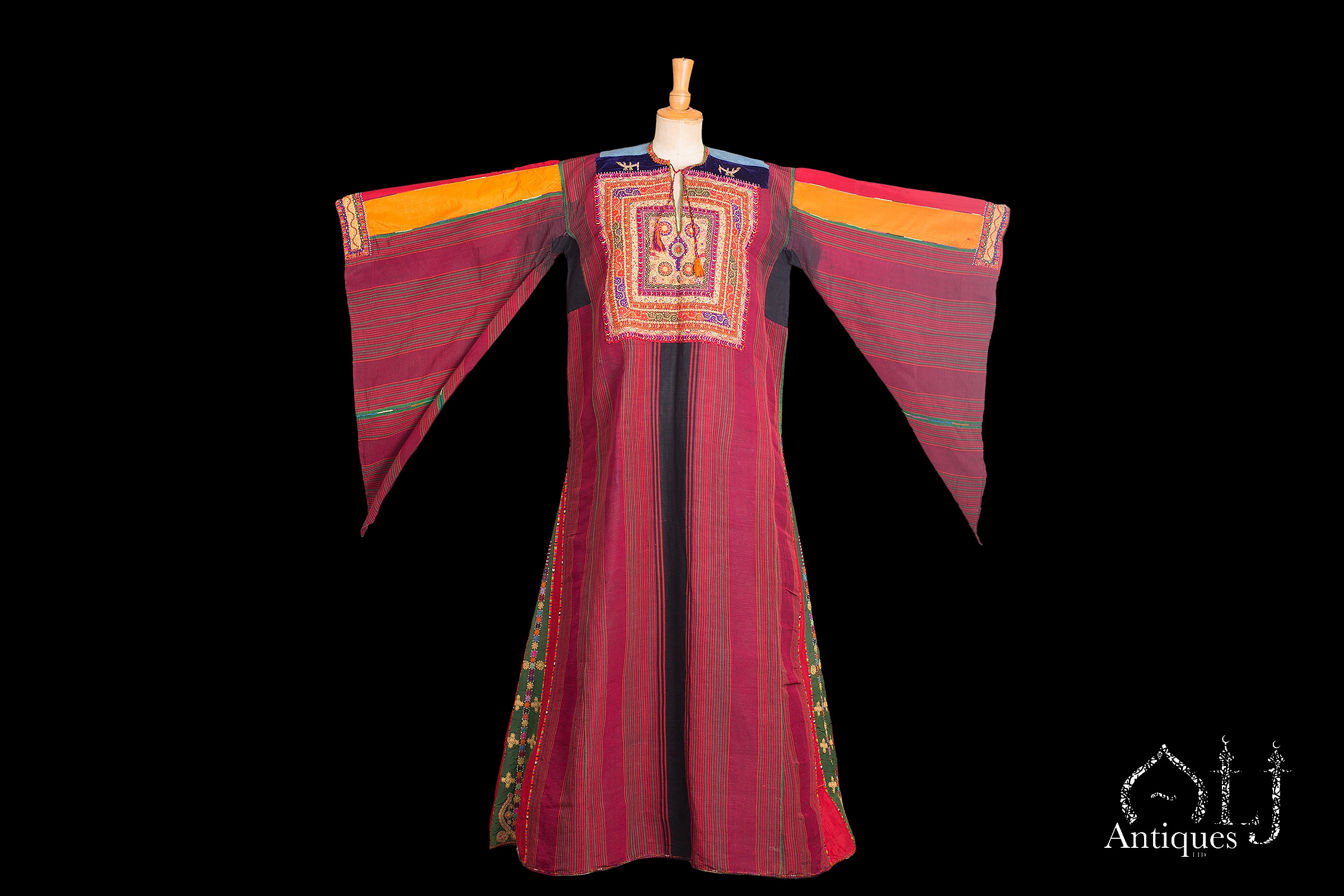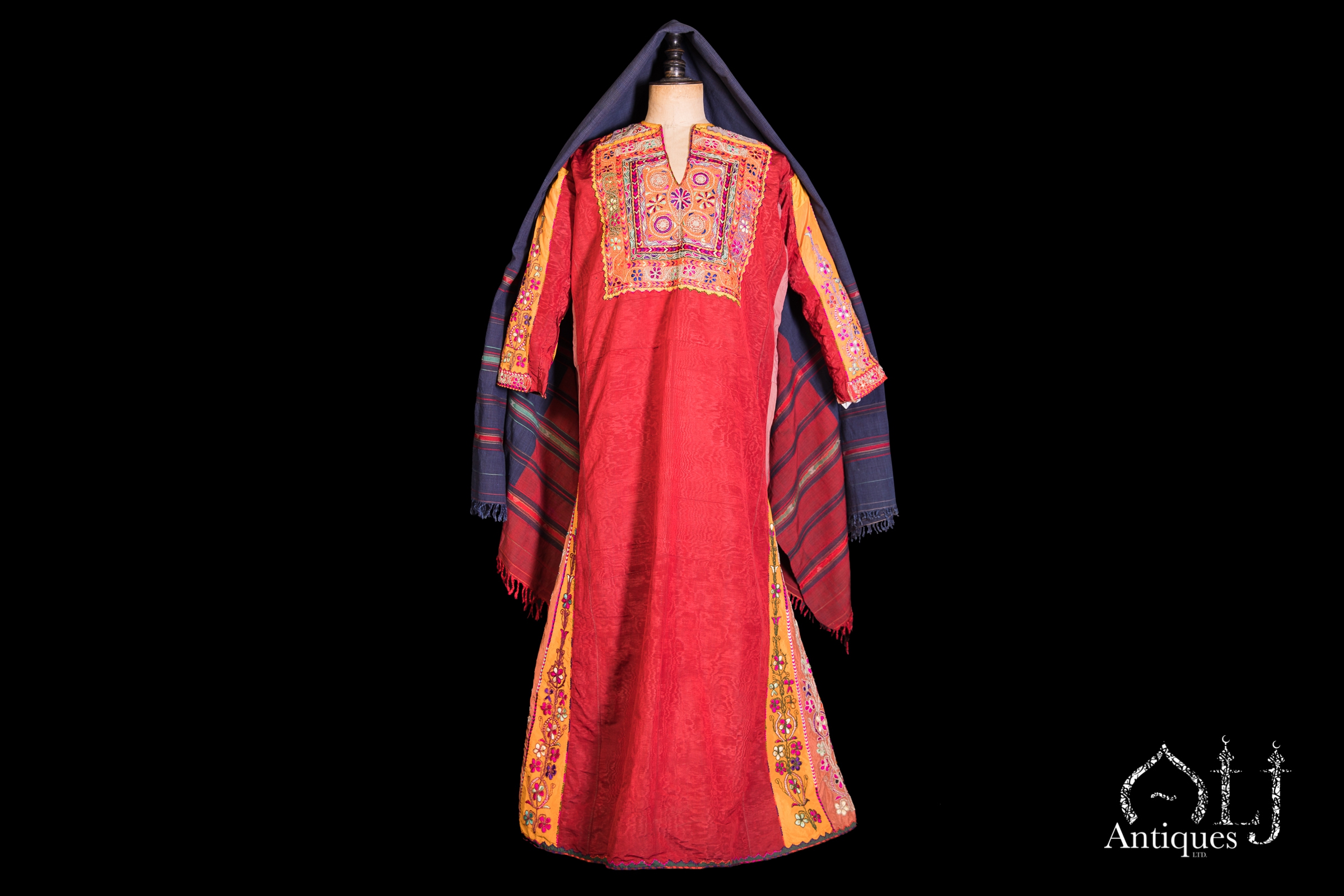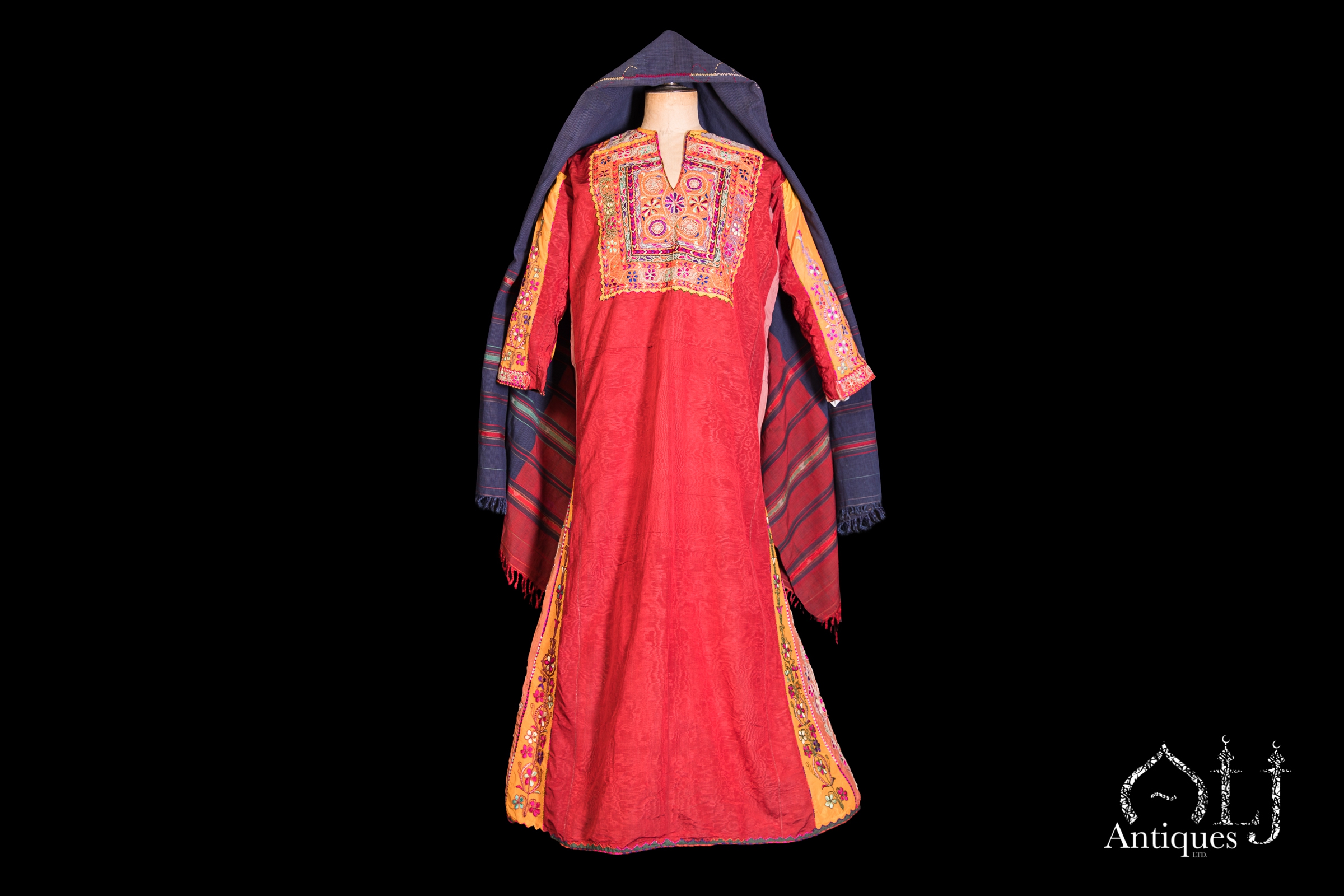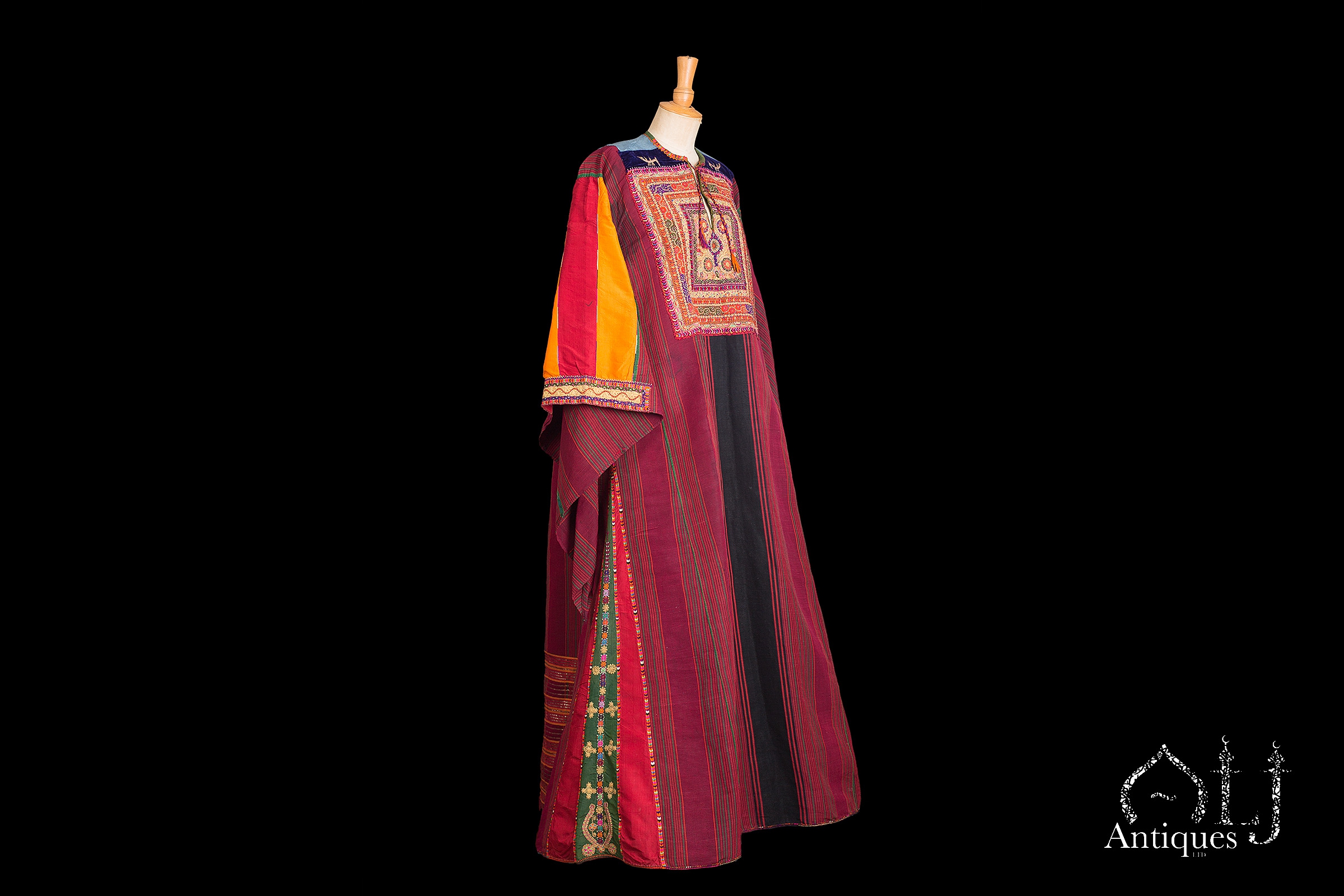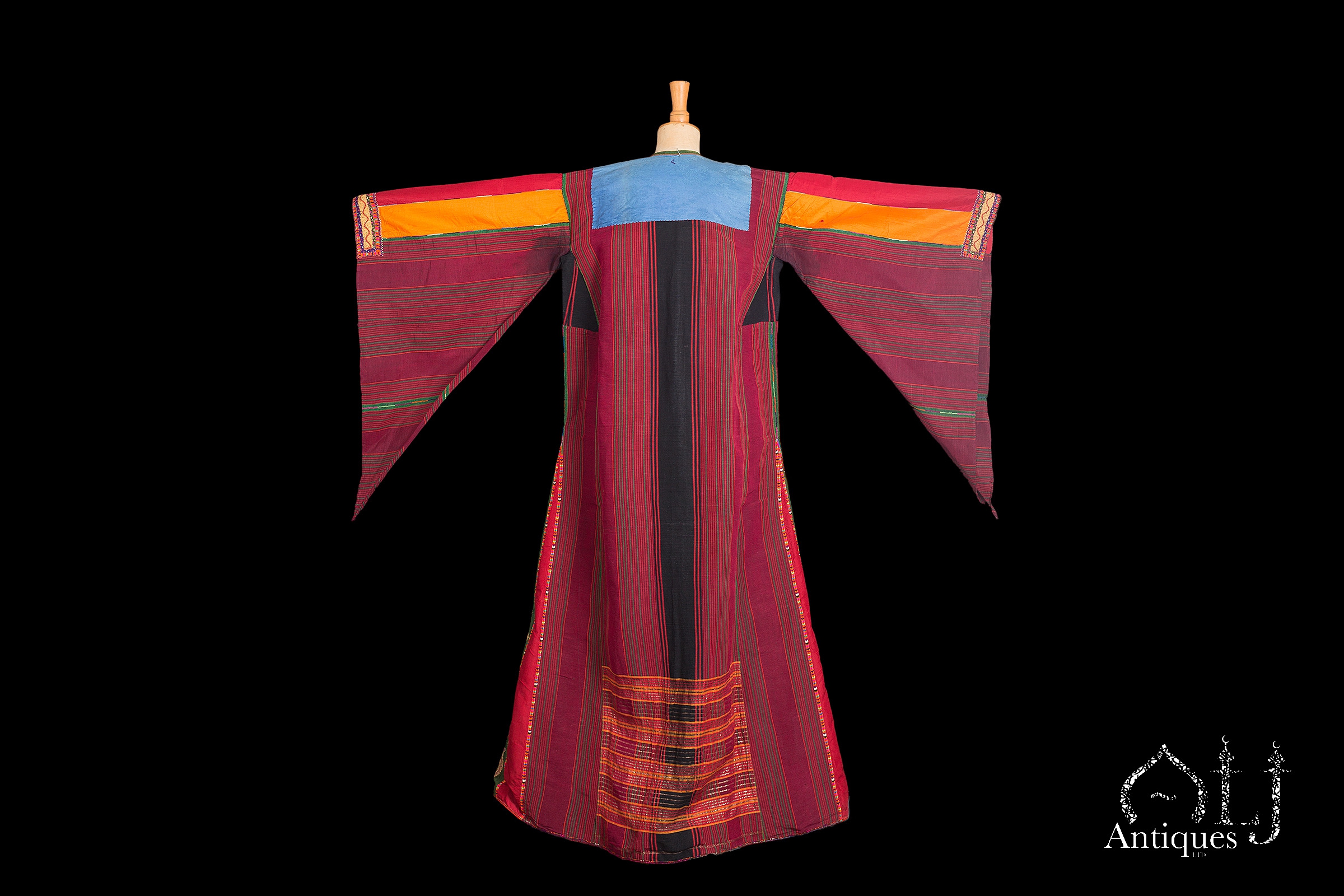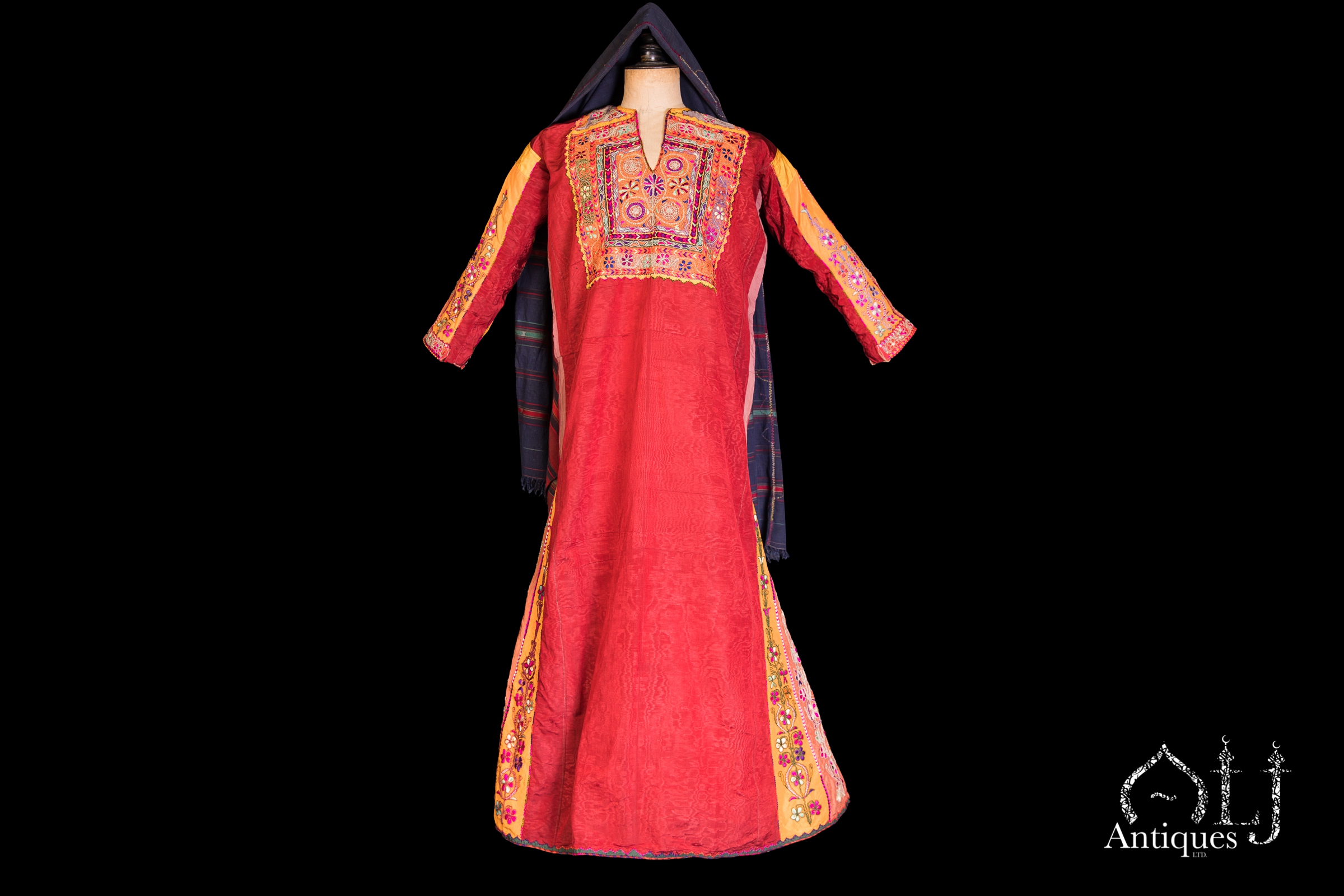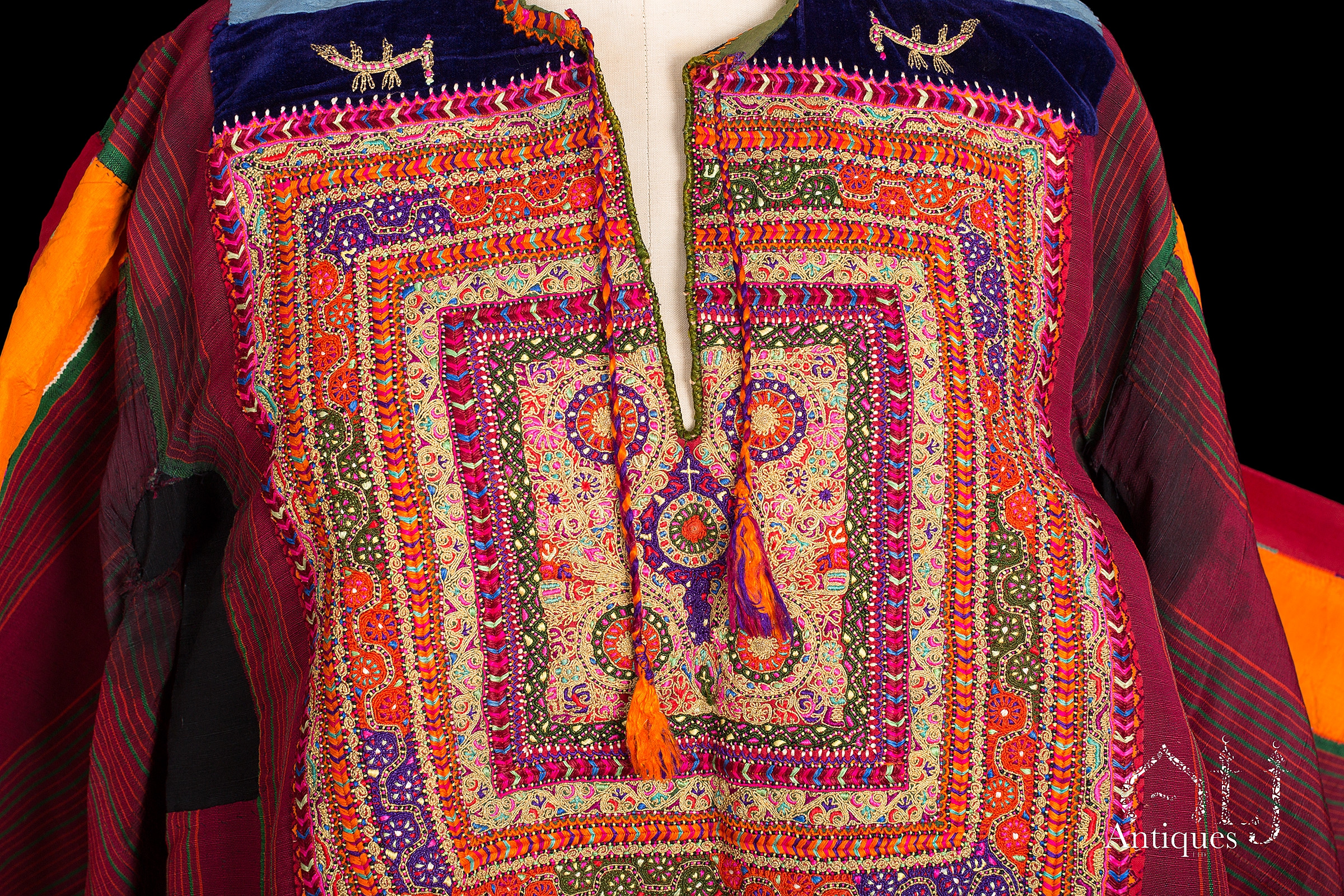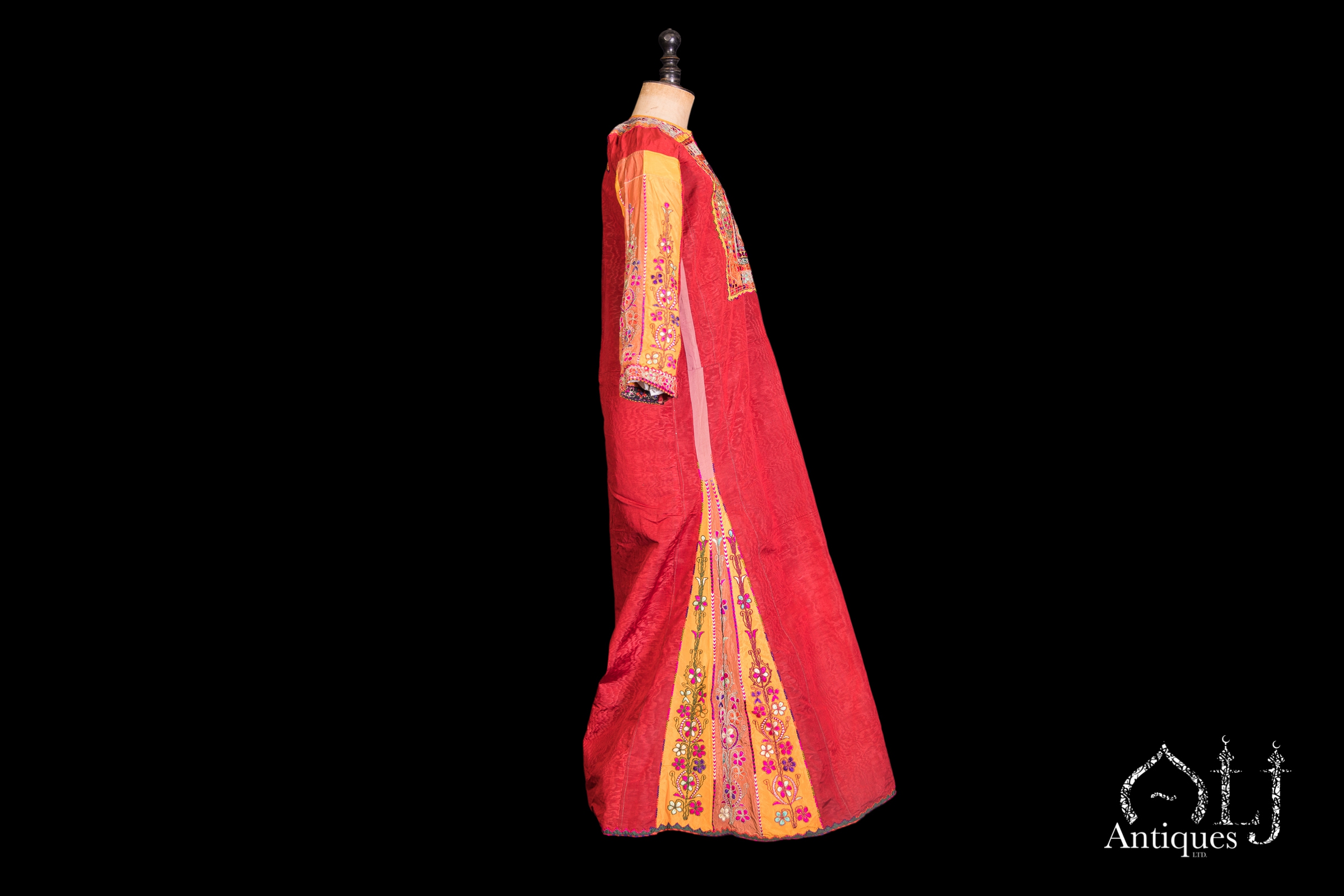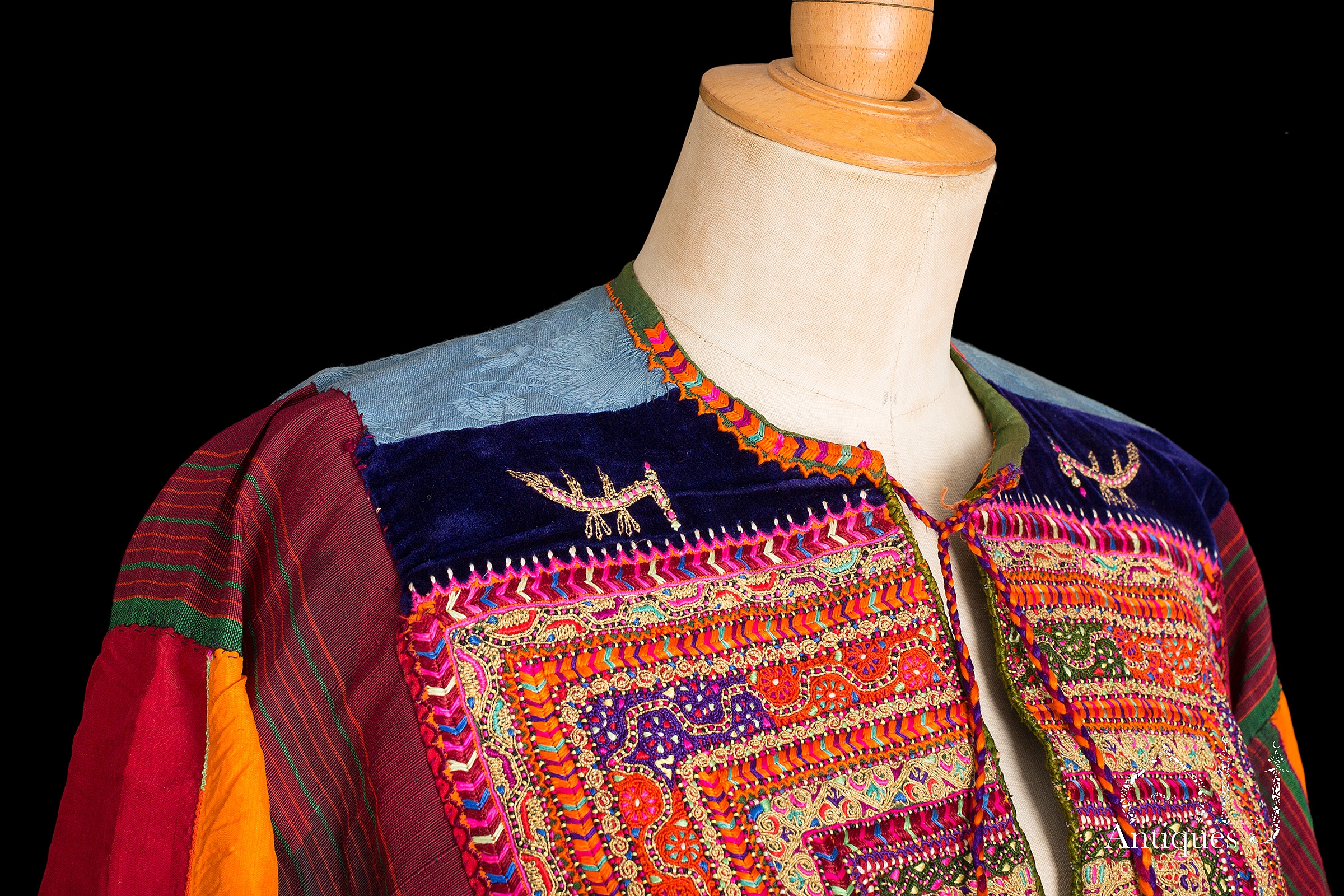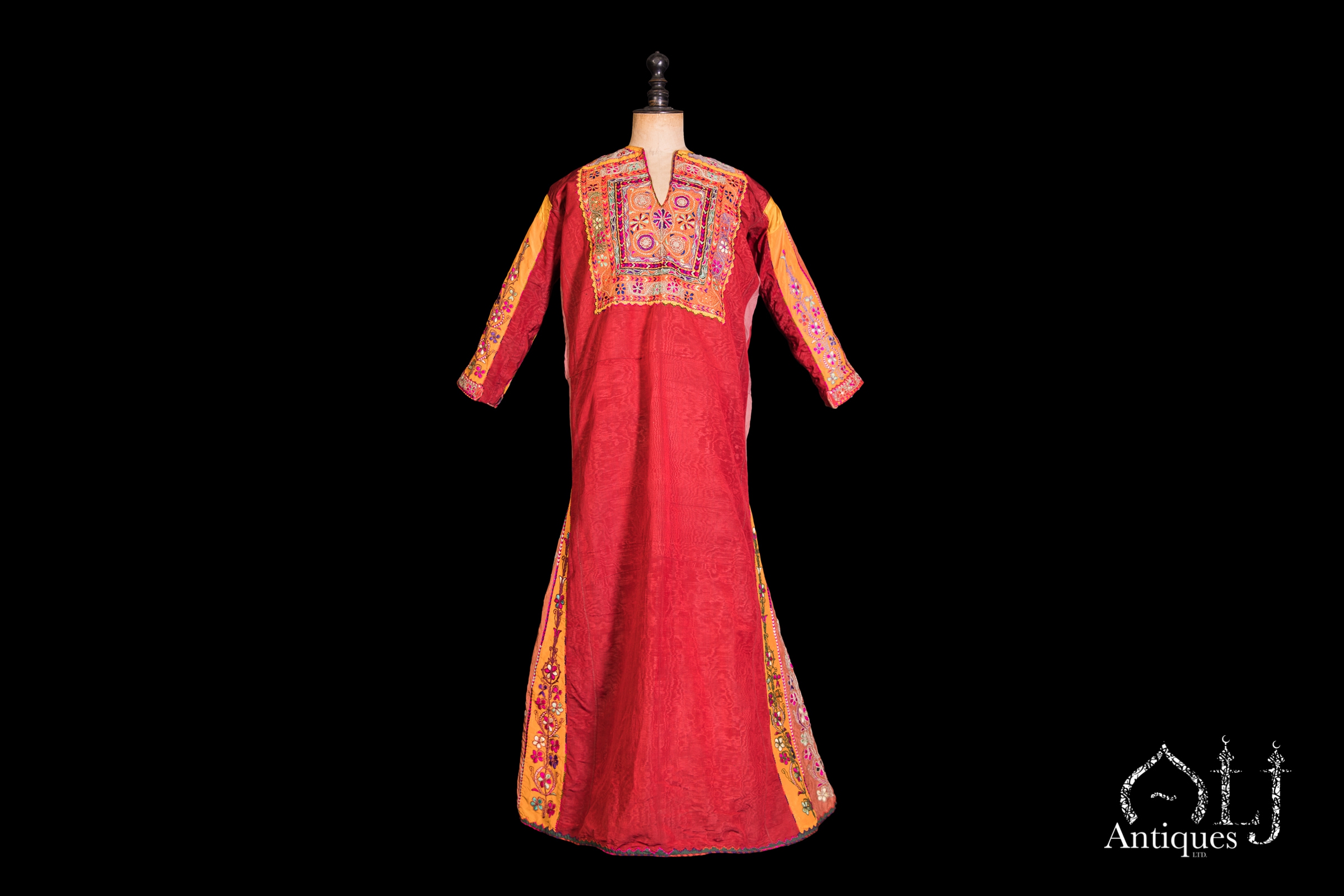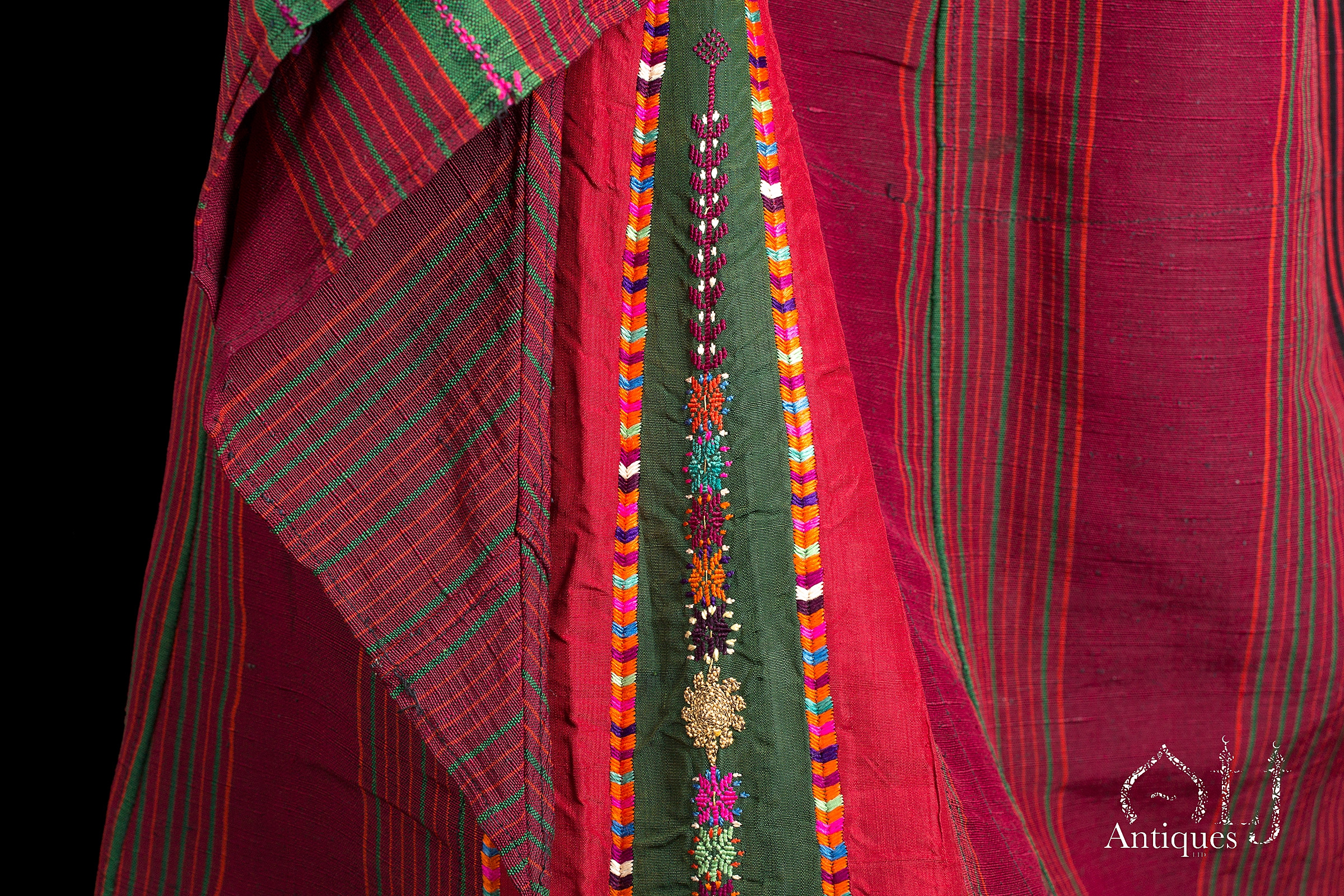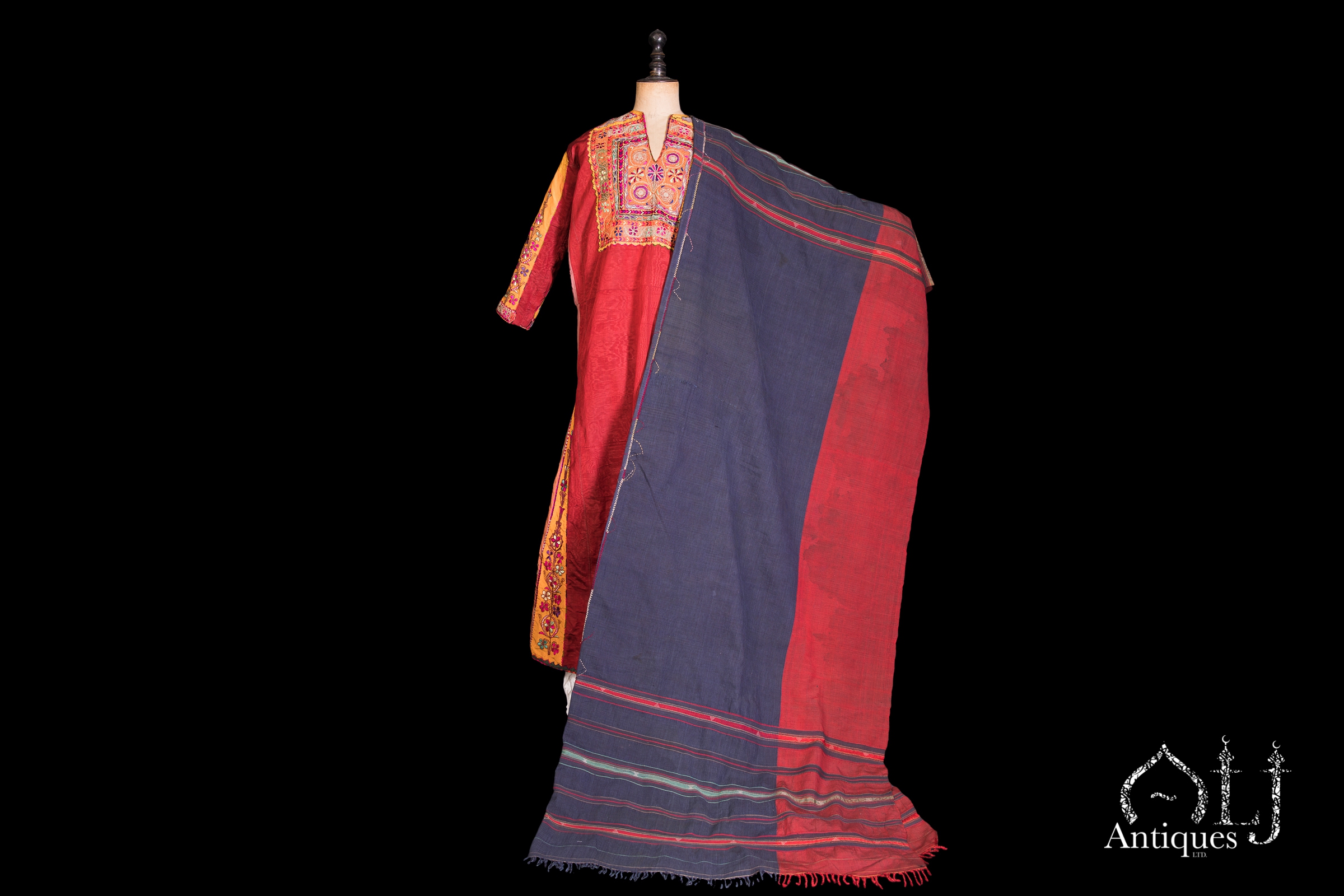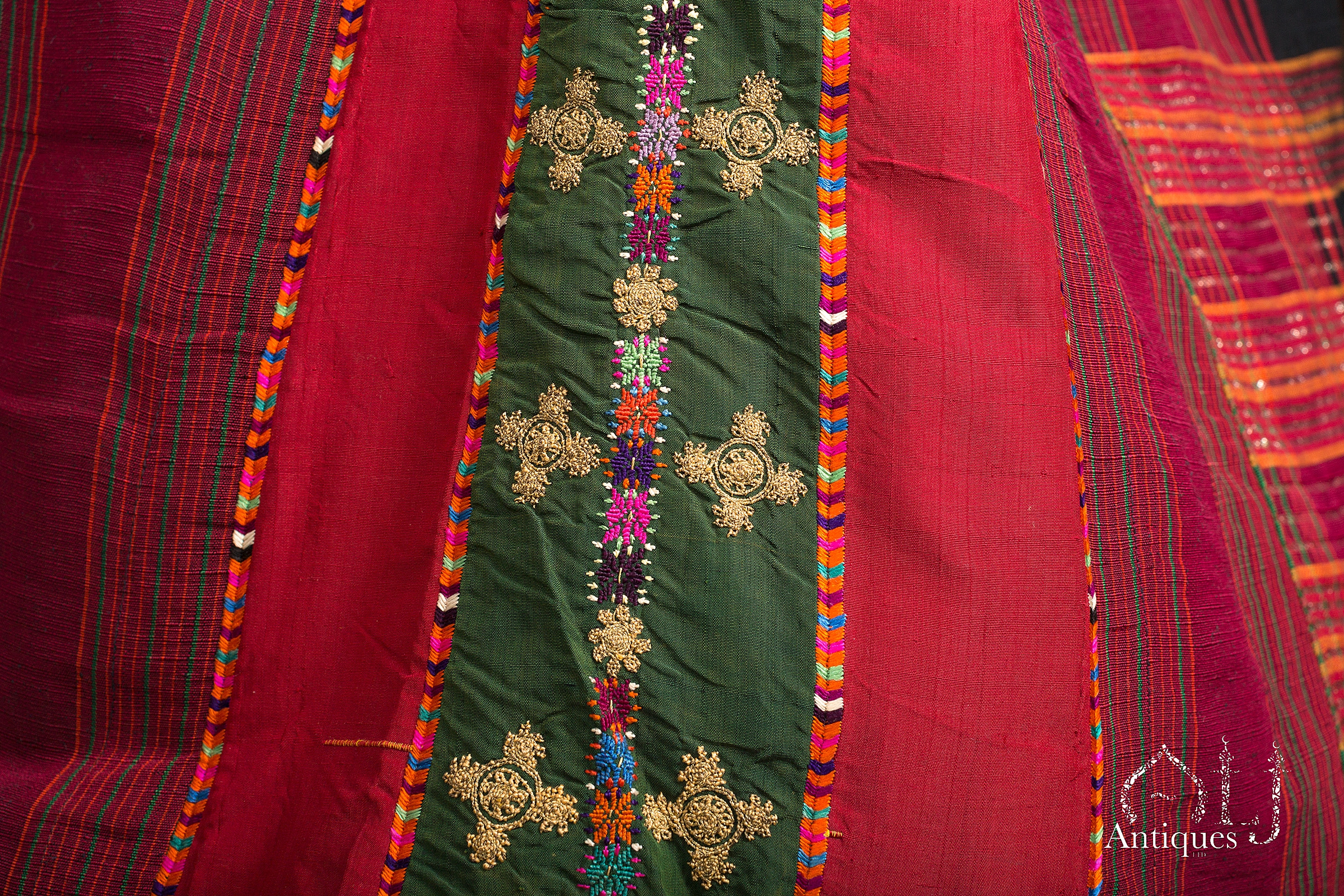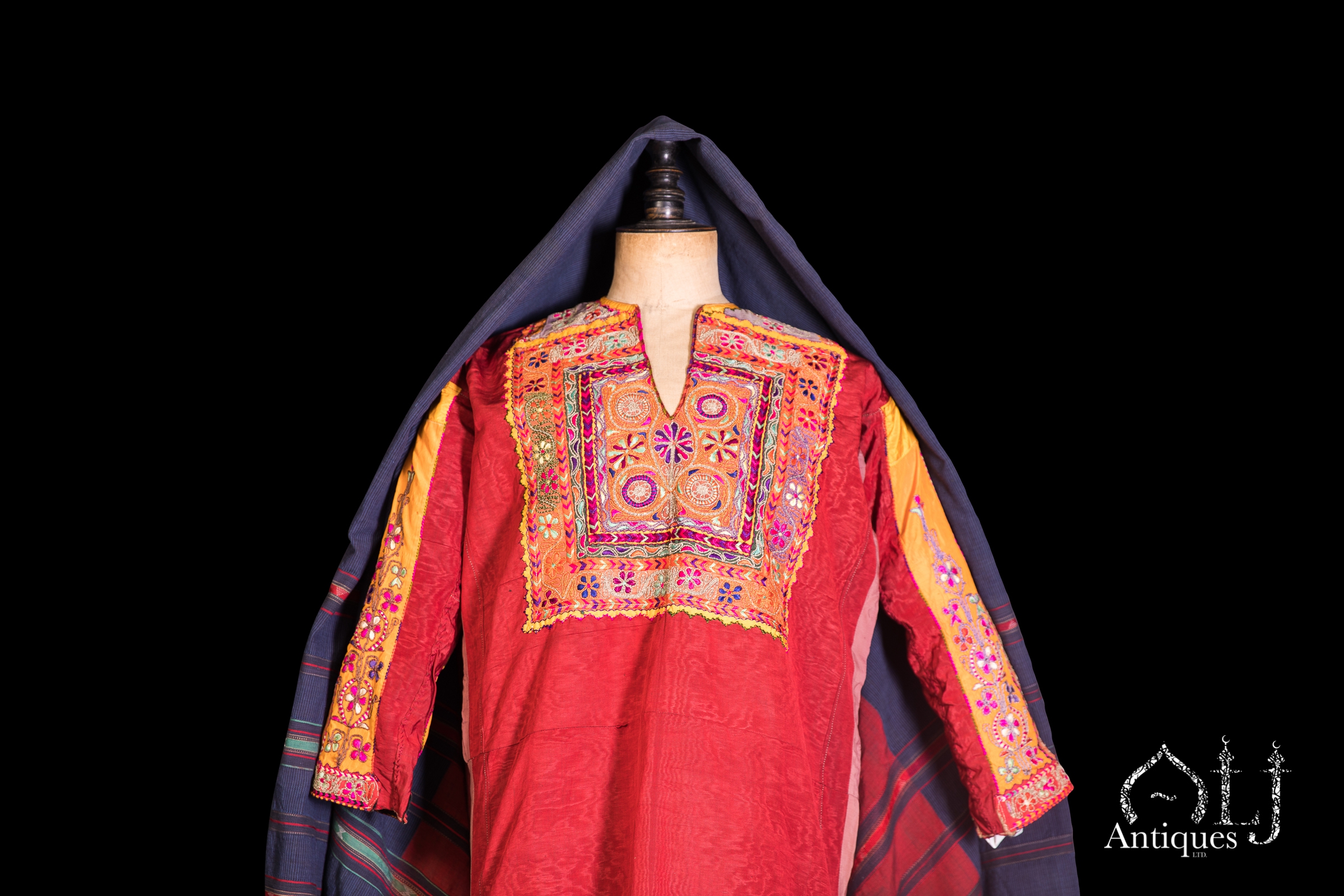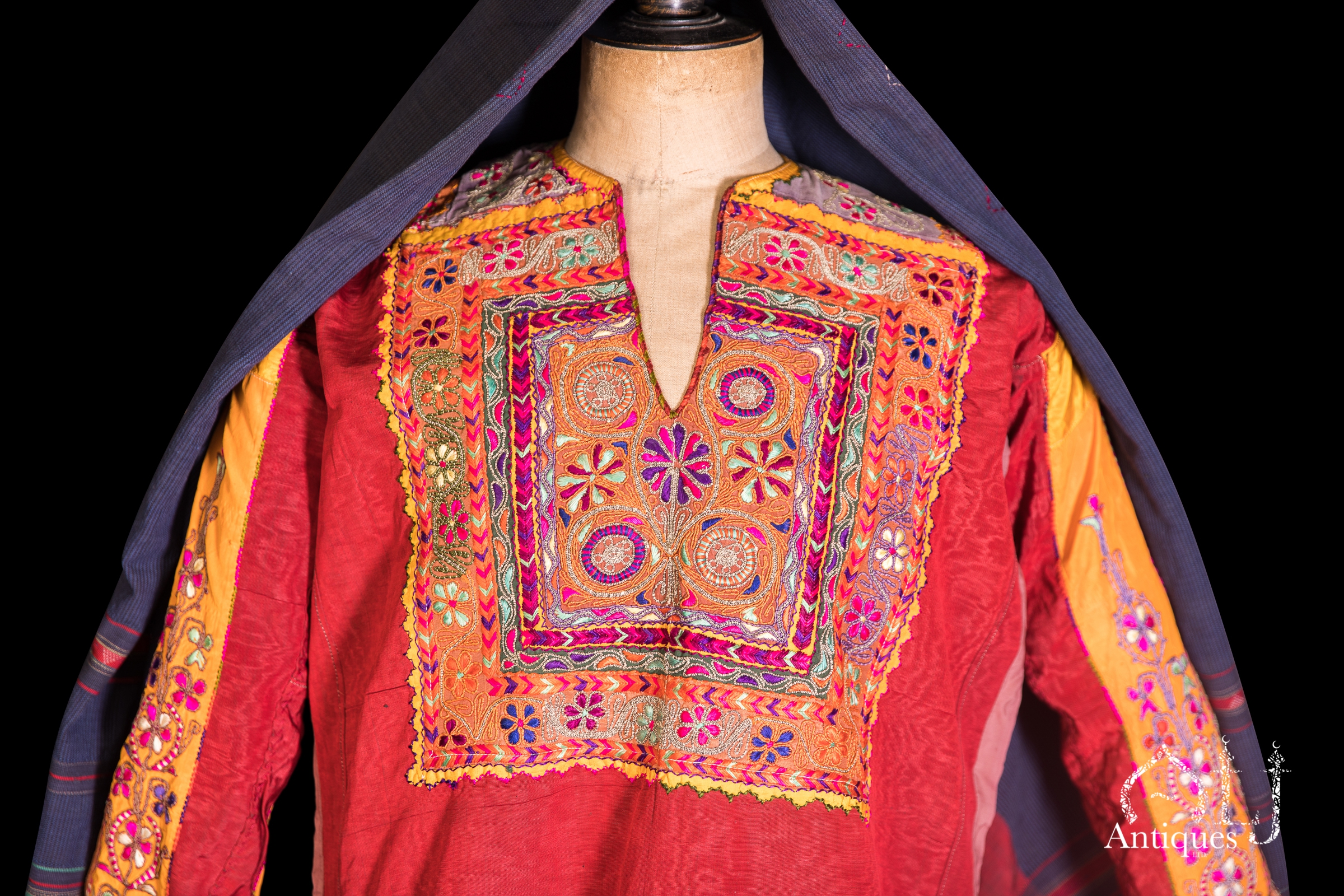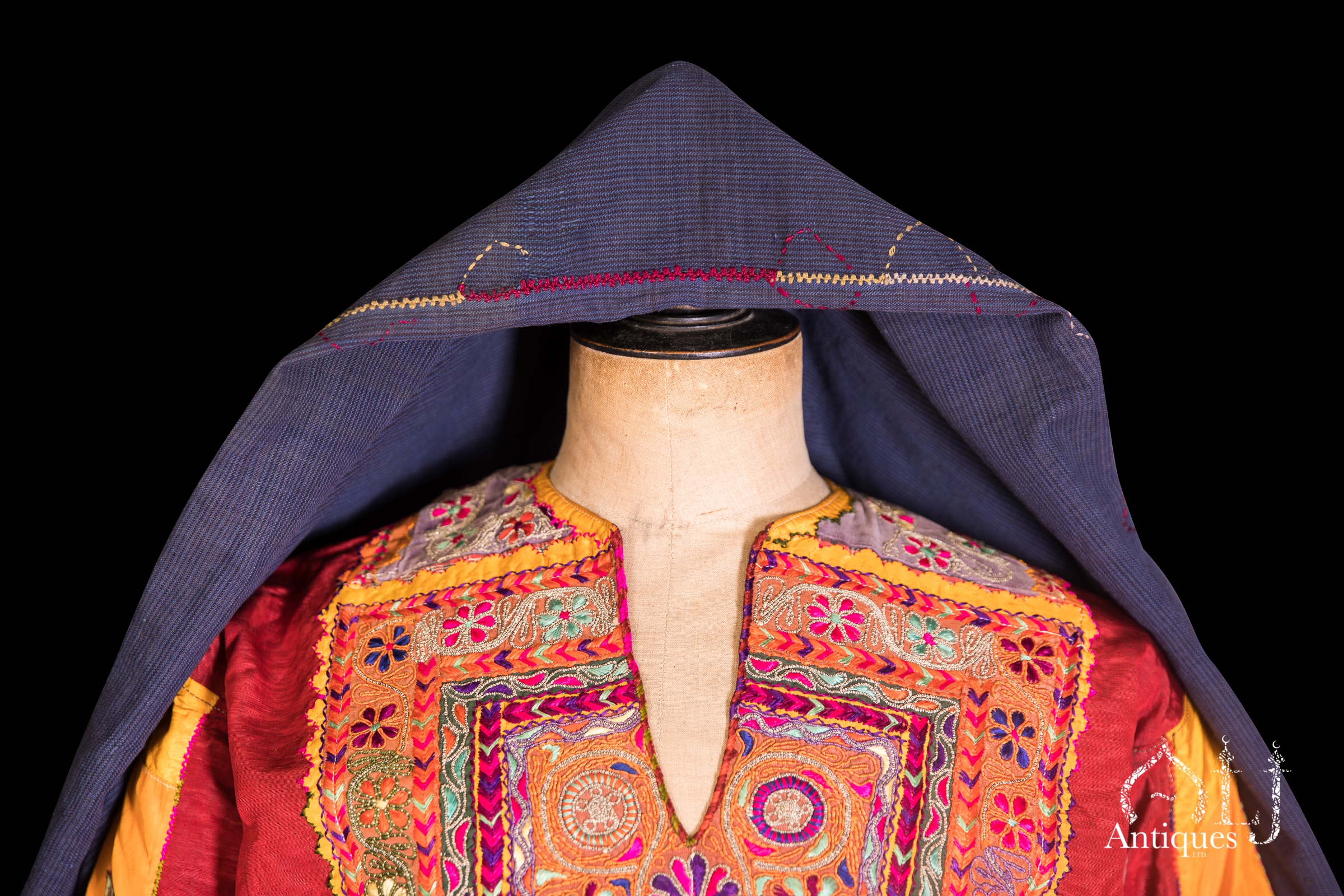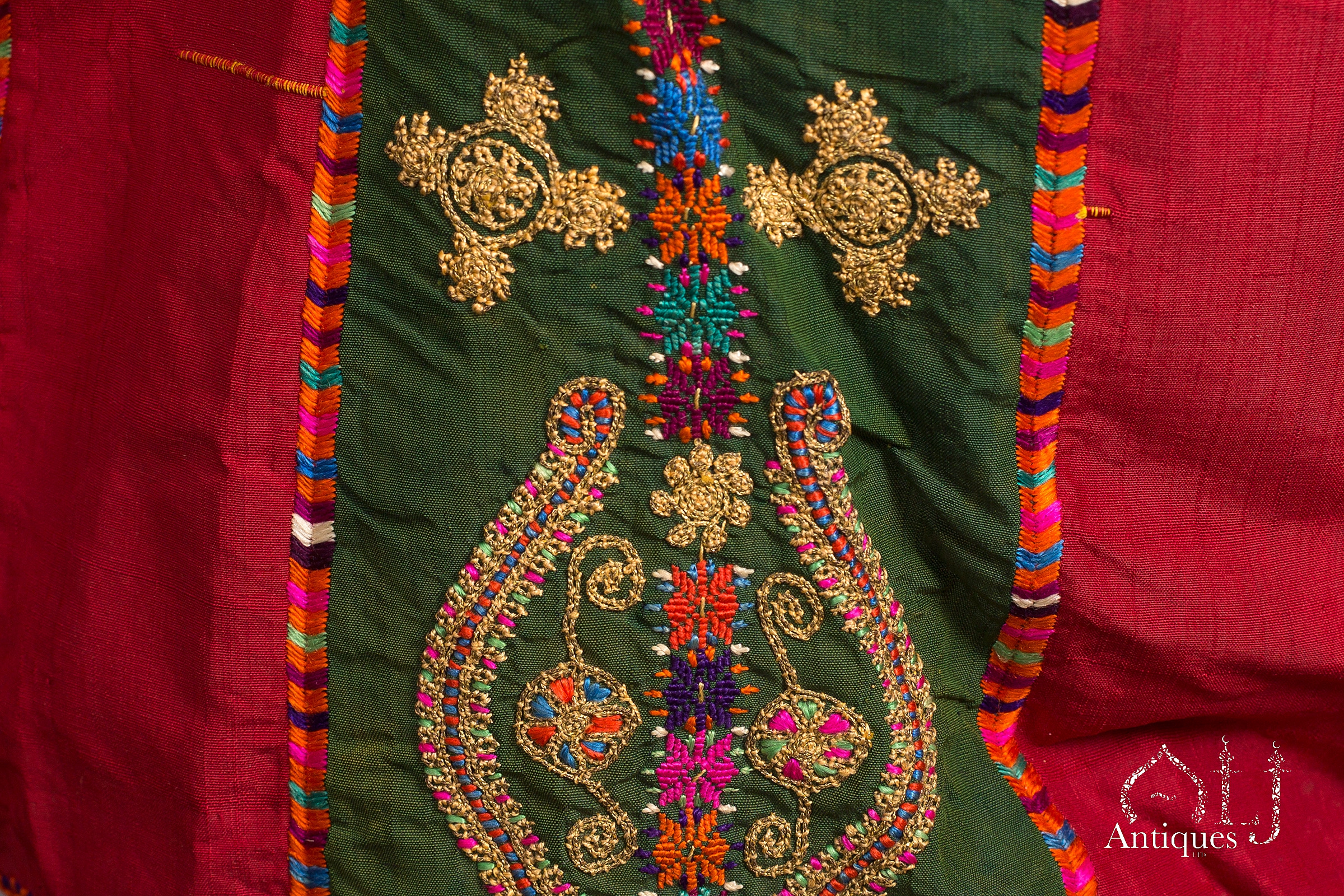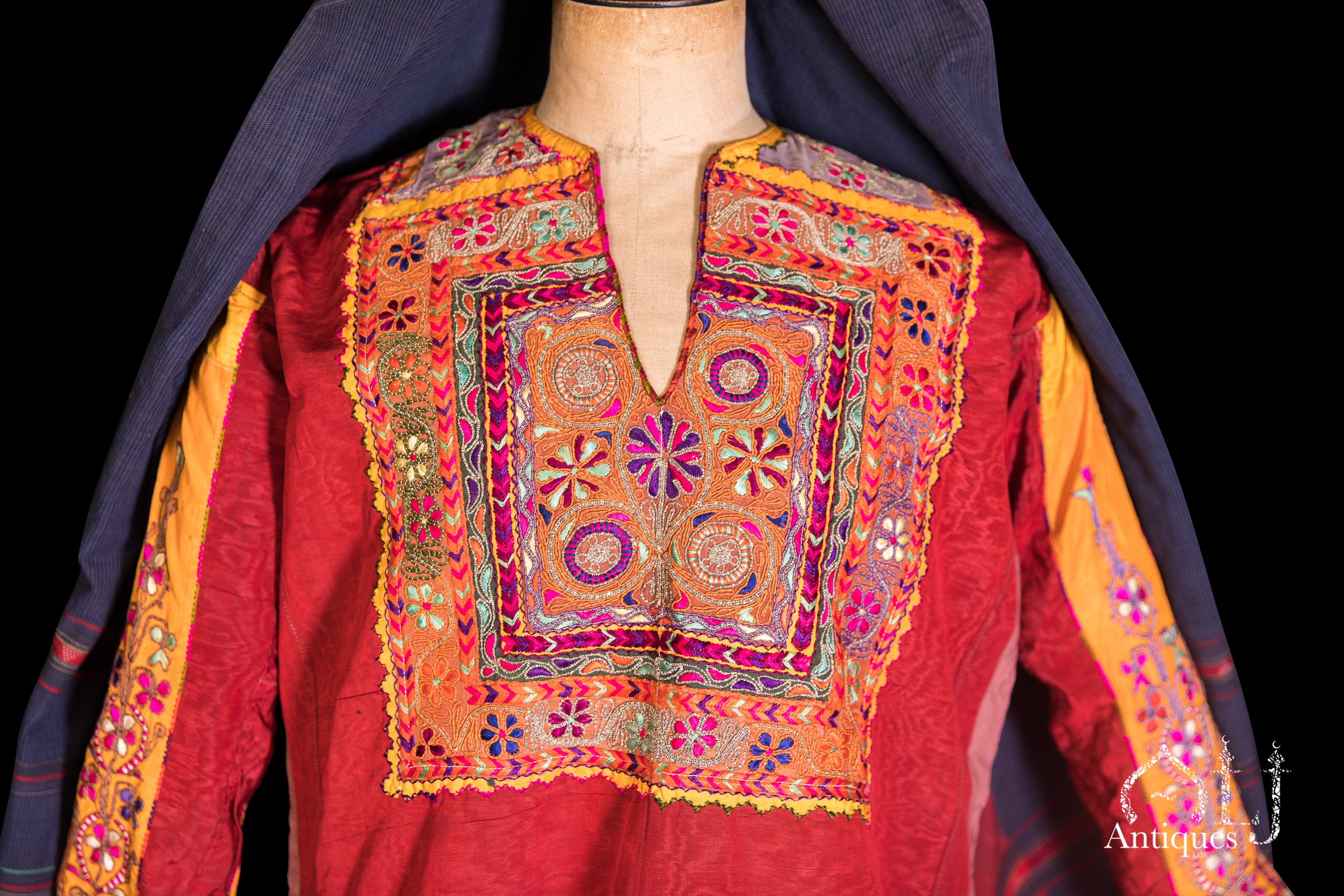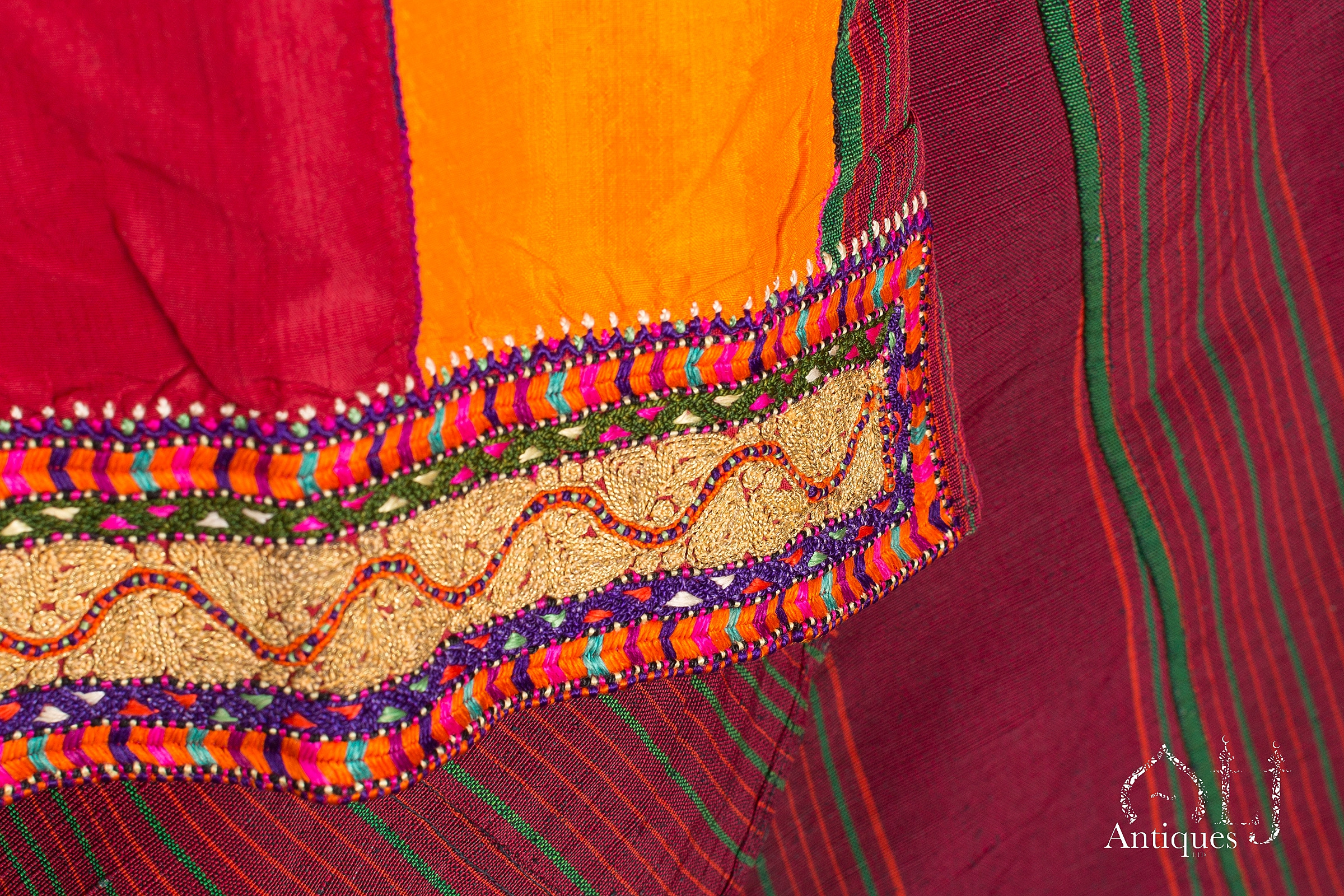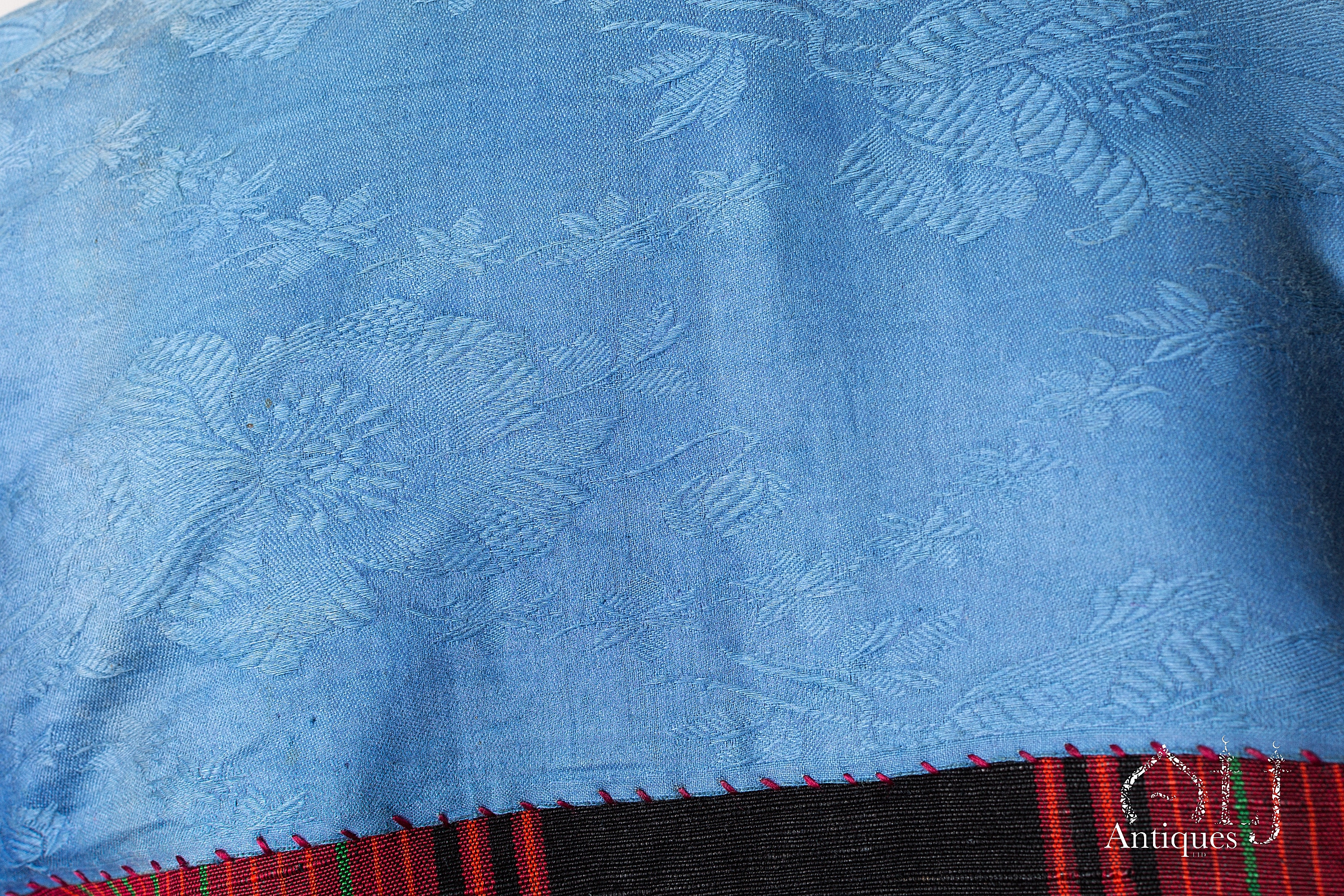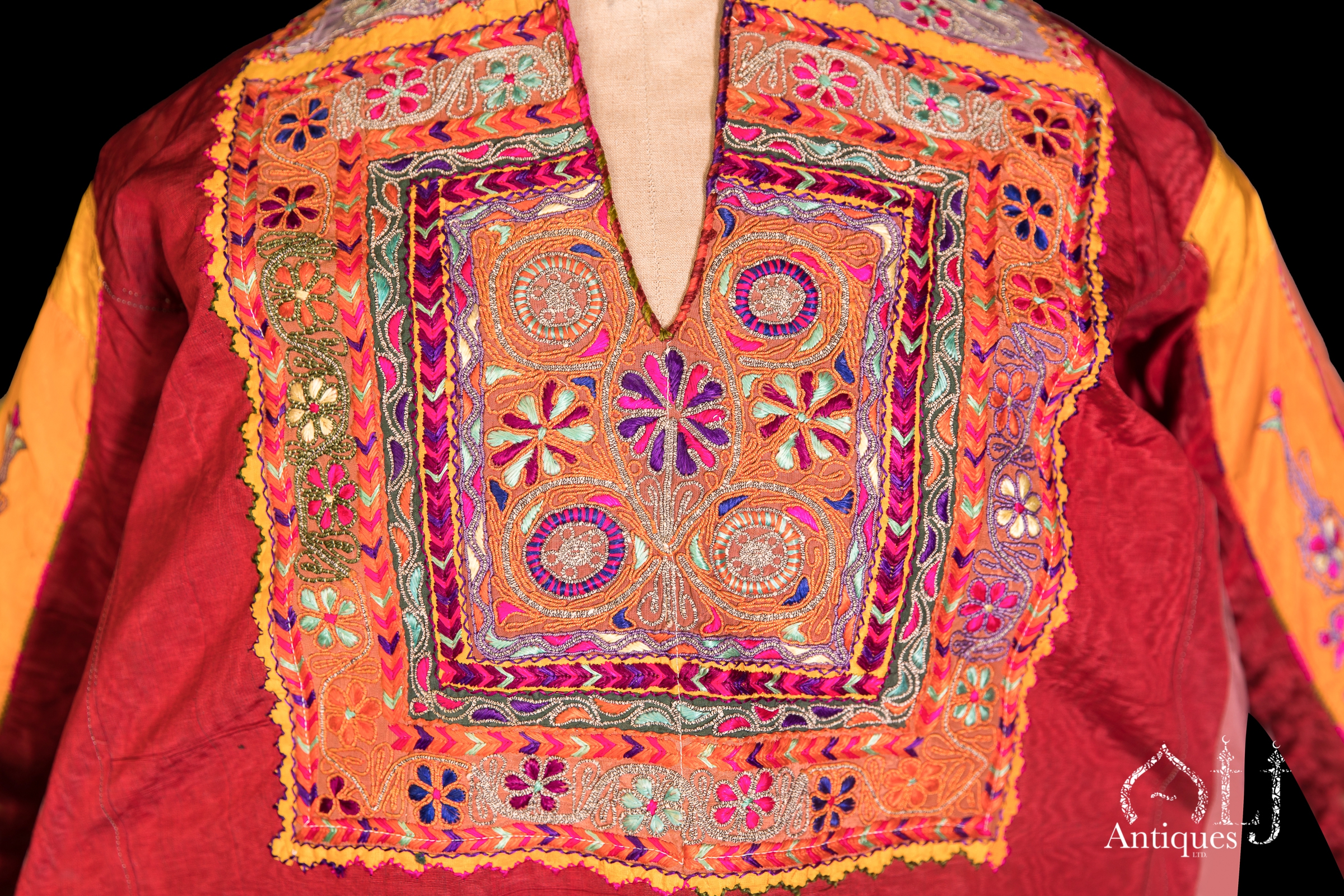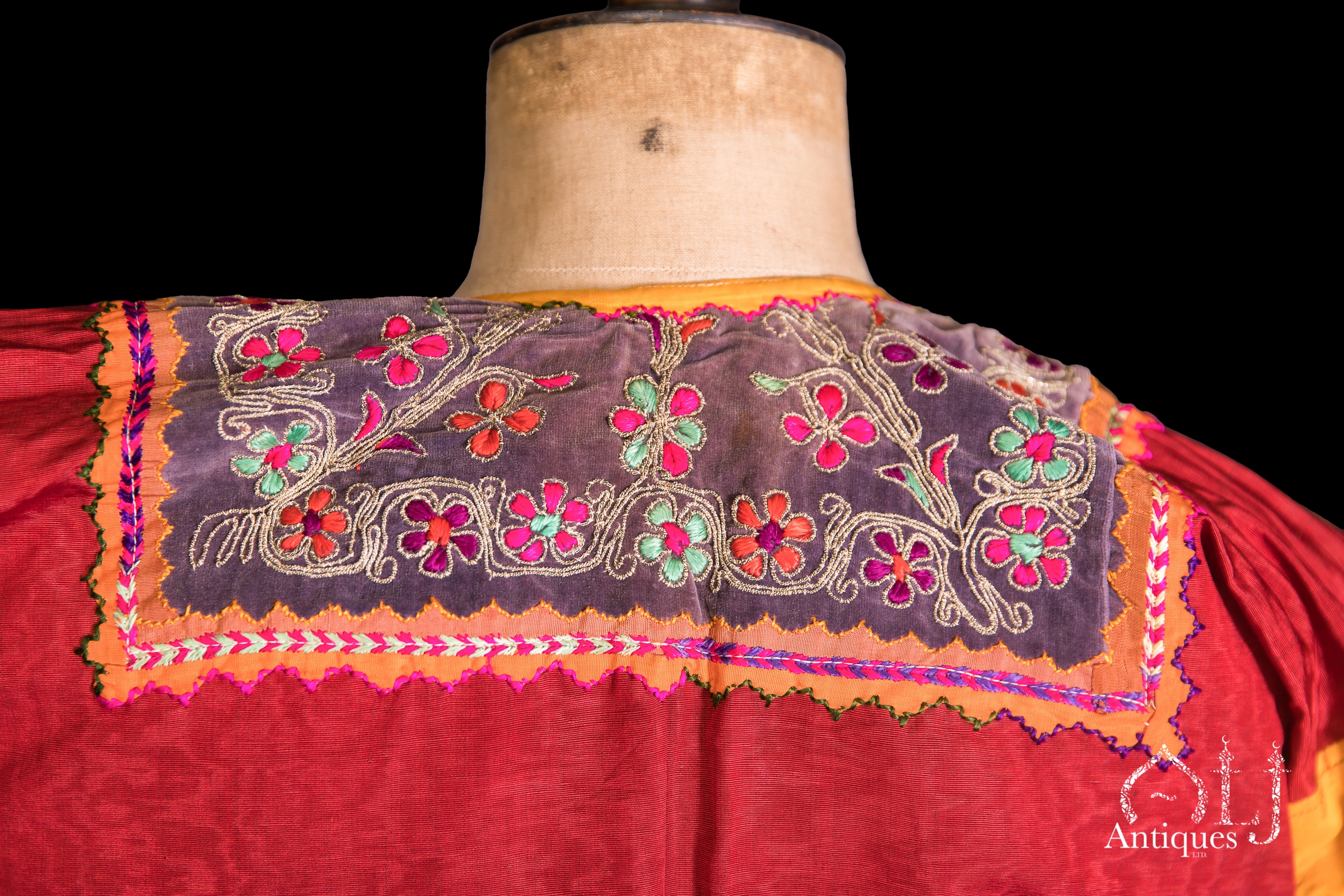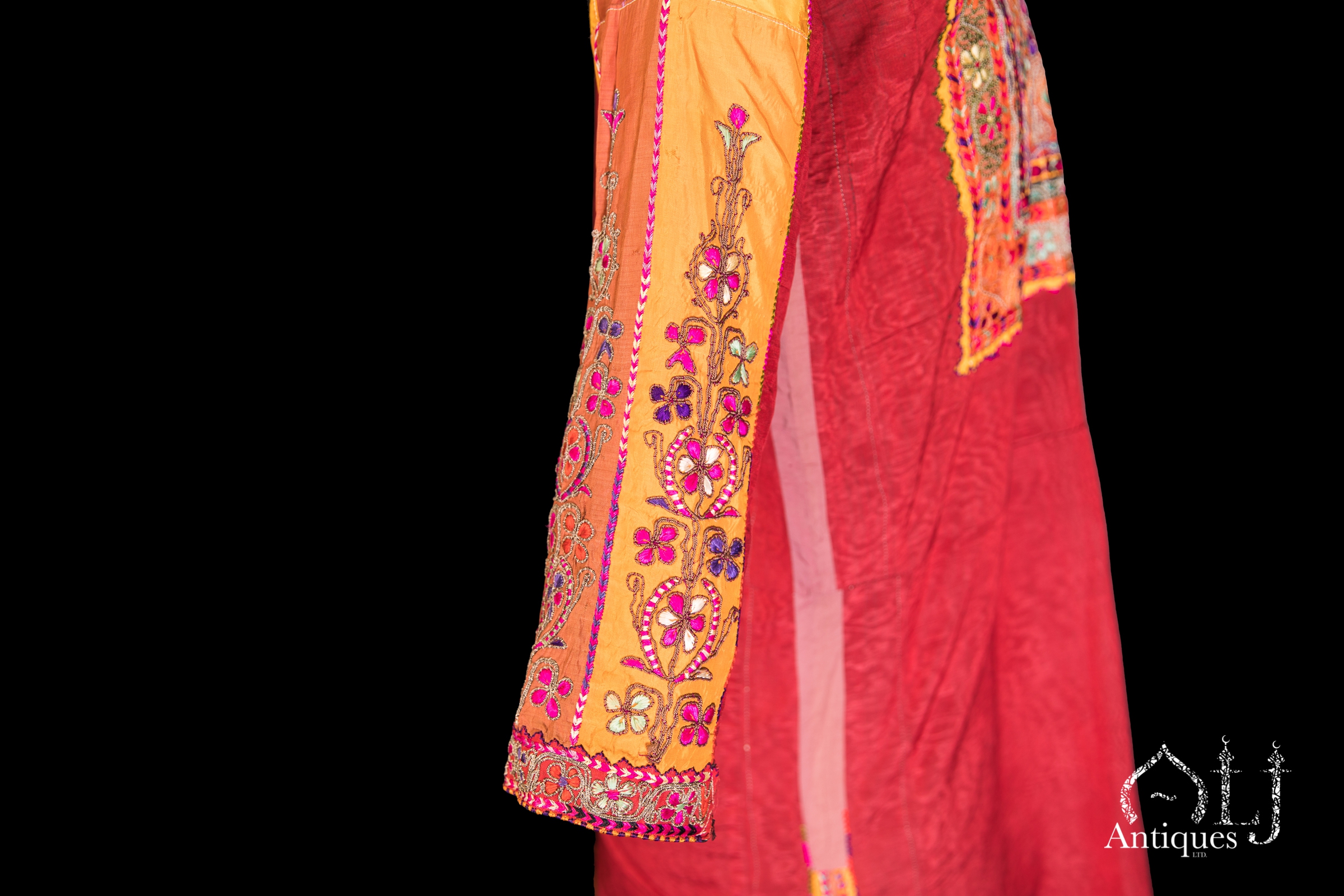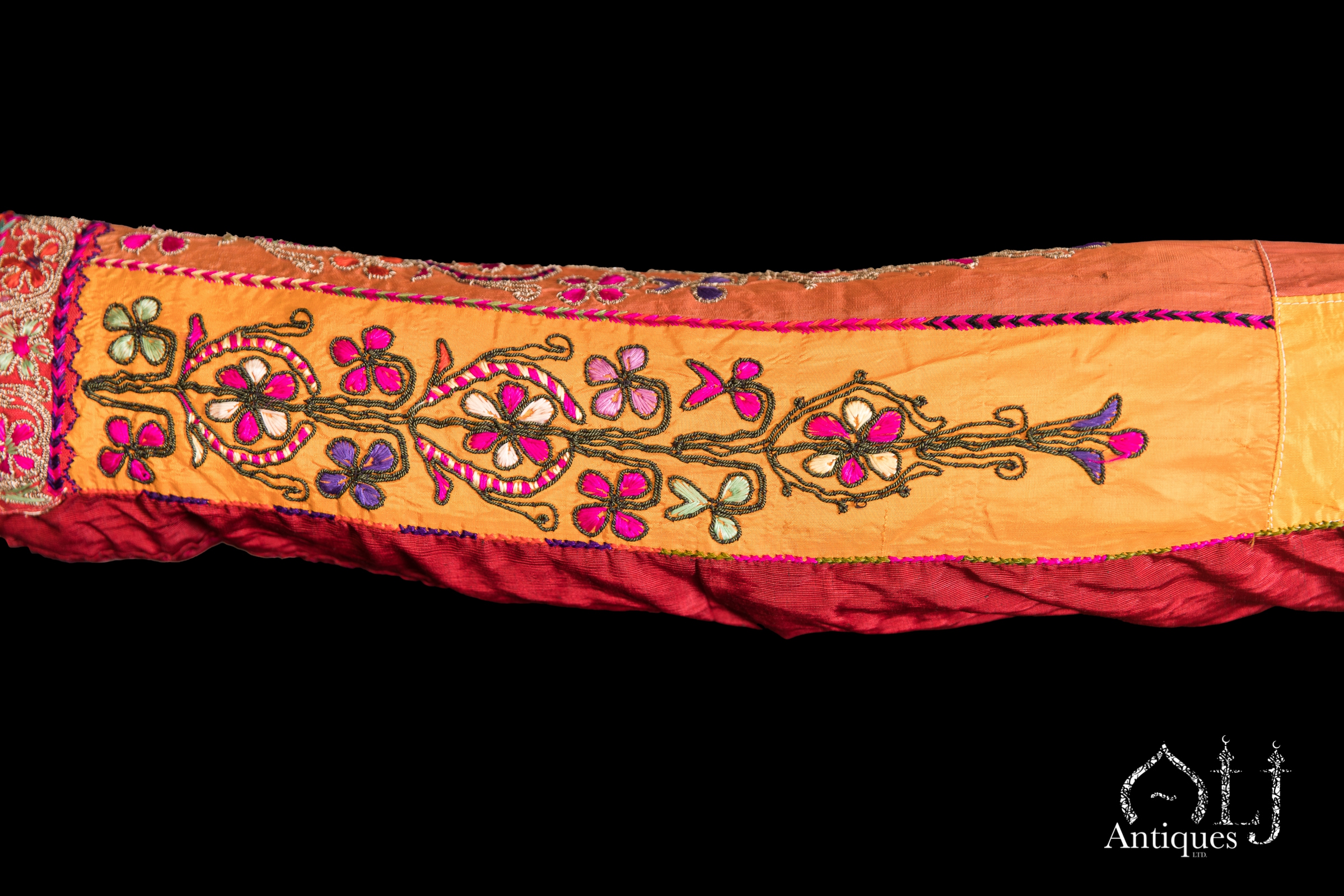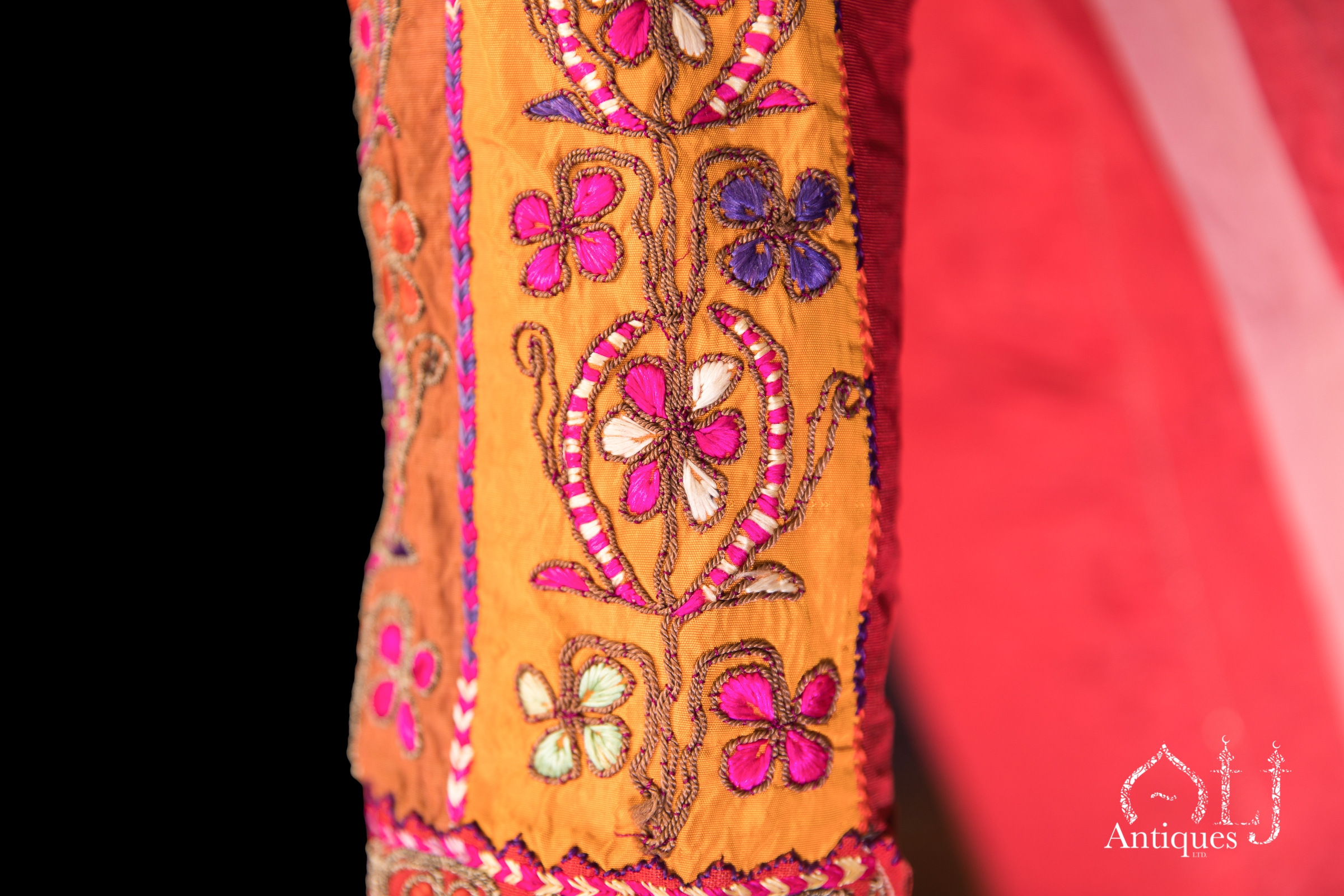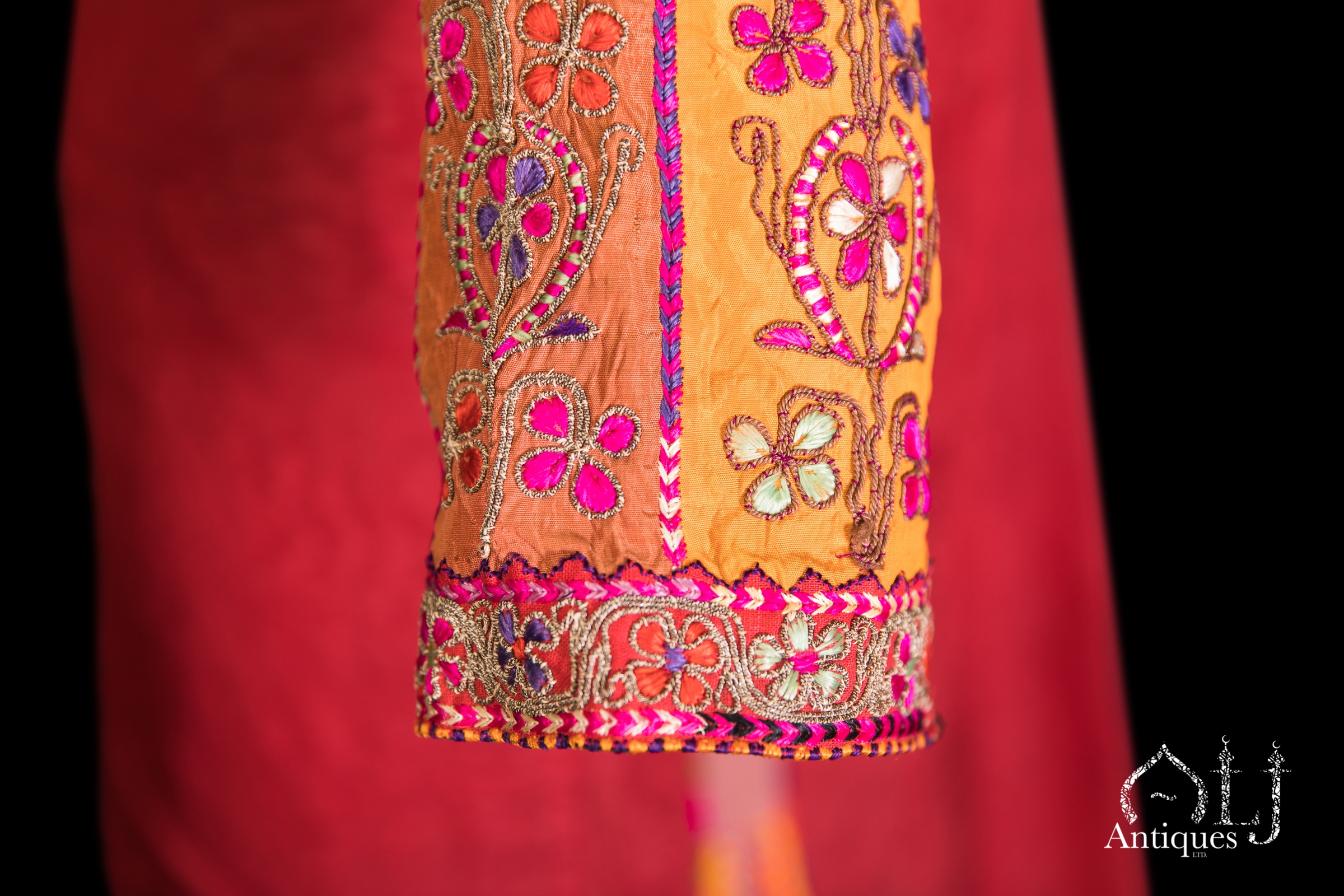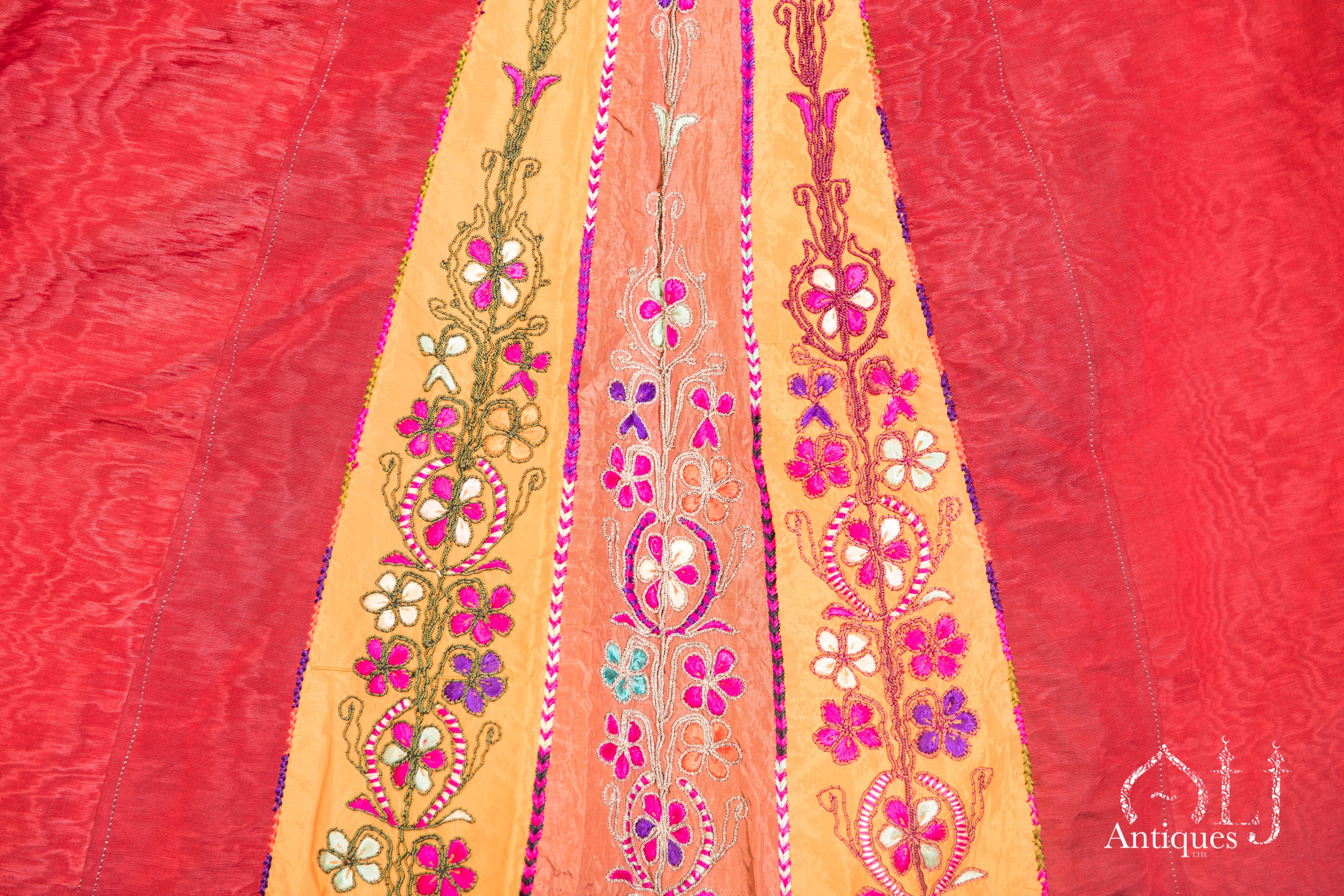Description
Various world civilizations are proud of their legacy, culture and artistic past achievements including the art of textile making and embroidery.
In the previous centuries and due to the difference in various environmental conditions including the social aspect and due to various factors such as to the simplicity of life, specific occupations, less of life necessities, the need to create an income for living, the abundance of time and the basic dependence in the textile industry on human labour therefore a huge part of the population have worked in the industry of fabric, textiles, clothes making and embroidery etc.
Throughout history, to be able to understand the importance of the fabric and textiles related industries one can look at certain examples of different global civilisations and their artistic achievements related to the Art of textiles making and embroidery.
For example, looking at the Japanese civilisation and how important the art of fine costumes making in the history and legacy of a nation that resulted of a wonderful legacy enjoyed to all humankind.
For instance the whole world appreciate and value the Art of making the traditional Japanese Kimono dress which can be found decorating the walls of various luxurious home museums and buildings from all over the world just like the precious paintings.
Other important example relating to the profession of making textiles and costumes is the legacy and the treasures left by the Ottoman civilization, which can also be found in major museums all over the world and how the Ottomans kept and looked after the best textile craftsmen who were carefully chosen to work for the Ottoman courts.
In the late 19th. Century and early 20th. Century and when it comes to the profession of costume making in what is known Bilad Al-Sham region or the Levant areas covering (Syria, Lebanon, Sinai-Egypt, the Jordan-Valley and old Palestine), although there is some kind of resemblance among these costumes but as a matter of fact various Arab cities and villages had their own unique style, some costumes were a bit simple and of a rustic nature where as others were very sophisticated and evolving all the time and if we may chose one particular city which was very important and was heavily involved in the fashion industry among all of these cities and in practically in the Holy lands in old Palestine area, it was the town of Bethlehem which was considered as Paris in Europe.
Also it’s worth maintaining here that in Al-Sham and the Holy Land areas the focus, creativity and development was especially in women’s clothing as men’s clothing was of a nomadic character and was effected and influenced by Bedouin life therefore it was difficult to make major changes.
Although there are various types of art related products and culture that had emerged from old Palestine, but as far as the whole world is concerned the most prevalent, famous and dominant art among all the others is the art of costume making for that reason one can only notice the whole worlds admiration to this outstanding heritage.
Also worldwide and among various types of Palestinian collectables and other works of art, potentially the most prominent collectable subject, the subject that was well covered by many authors and book writers and many exhibitions were held in various countries from all over the world which had boldly manifested itself through the amazing and globally very well recognised is the Art of Palestinian costumes.
For large and important collection of fine Palestinian cloths and costumes are well preserved and kept in major museums of the world and all other world museums are racing to acquire these fine garments, such collections can be found in the major world museums such as the British Museum in London-in the U K and the Metropolitan Museum of Arts in New-york-in the USA and from the Middle-east the fine collection of Palestinian costumes in the Tariq Rajab Museum in the state of Kuwait.
Other very important collection of Palestinian and other Arab costumes belongs to Madame Widad Kamel Kawar who was born in the Palestinian town of Tulkarem and currently naturalized and lives in the Arab Hashemite Kingdom of Jordan, her vast collection was carefully chosen by her and her consultant Ms. Layla Pio, both ladies have established the institute of Tiraz.
In November 2015, Tiraz held a major exhibition and was called (Ya Hafeth Ya Ameen) to present the Palestinian embroidered costumes and other textiles.
Another local promising and decent collection of Palestinian costumes belongs to Birzeit University Museum in Ramallah-the Palestinian authority.
This very rare and expensive dress to make and acquire at the time is called (Thobe Al-Malak) translating to the Royal dress, the dress takes its name from the expensive striped linen and silk fabric which was woven locally and mainly in the Syrian city of Damascus.
The Dress is heavily couched with silver-gilt wrapped thread and embroidered on silk fabric and on Atlas silk patches.
The overall embroidery on the dress is exceptionally fine and with densely couched embroidered panel, the high proportion of gold cord couching on the applied square plastron chest panel (qabbeh) is decorated with various floral patterns, the centre is clearly decorated with the Christian symbol of Jesus cross, with a trompe l’oeil of probably silver gilt necklace edging threaded on the V shaped neck collar ending with Jesus cross.
The dress is deigned with what is so called the long batwing sleeves, the dress is lined with blue cotton fabric.
The yellow stripes have been used at the nape on the back skirt panel (alam) to accentuate the expensive silver wire.
The dress shoulder and part of the chest is of blue silk velvet embroidered with bird motives.
Dimensions:
145 cm height.
135 cm the overall width when both sleeves (Irdan) are wide open.
Condition:-
Very good, some stain and marks on the dress.
Provenance: As told by the dealer who have sold lots 503 & 506, both dresses were originally bought during the Mandate of Syria & Lebanon and were part of the collection of one of the French High Commissioners of Syria & Lebanon, the estate was legally sold by the family and heirs who wishes to stay anonymous.
References:-
For similar Royal dress please see the following
(Thobe Al-Malak) from the Bethlehem area please see Embroidering Identities, A Century of Palestinian Clothing, By Iman Saca in Collaboration with Maha Saca, The Oriental Institute Museum of the University of Chicago, 2006, ISBN: 1-885923-49-X. Lot catalogued on page 14.
For Almost an identical dress please see
Palestinian Costumes, by Shelagh Weir, Published For The Trustees Of The British Museum, By British Museum Publications, 1989, ISBN: 0-7141-1597-5. Please see similar lots catalogued on page 130-131.
For another similar dress please see
Palestinian Costume, by Jehan S. Rajab, Published by Kegan Paul International, London & New York, 1989, ISBN 0 7103 0283 5. Please see plates 11 & 12 exhibited on page 38.
For other similar Bethlehem Embroideries please see:-
Traditional Palestinian Embroidery and Jewellery, by Abed Al-Samih Abu Omar, 5th. Edition, Jerusalem 2005, please see Pages 20-29.Lot 505.
For almost identical Al-Malak Dress from Bethlehem please see the exhibition of colours at the Museum of Quai Branly- Paris-France, 2011. Exposition (L’Orient Des Femmes)-II, Women from the East.
For another almost identical Al-Malak Dress from Bethlehem and other Palestinian Embroideries please see the collection of the Metropolitan Museum of Art in New York –USA.
For another similar Al-Malak Dress and other Palestinian Embroideries please see the collection of Birmingham Museums & Art Gallery
Birmingham City-UK.
For another similar Al-Malak Dress and other Palestinian Embroideries please see the collection exhibited at the Newark Museums & Art Gallery, Newark New Jersey, USA.
For another similar Al-Malak Dress and other Palestinian Embroideries please see the collection of the Museum of International Folk Art exhibited at the University of New Mexico –USA.
For other Examples, please see
Palestinian Cultural Exhibition, Held in July 1990 at the Brunswick Town Hall- Sydney Road, Brunswick, Victoria, Australia, Curtsy to the Australian Palestinian Heritage.

